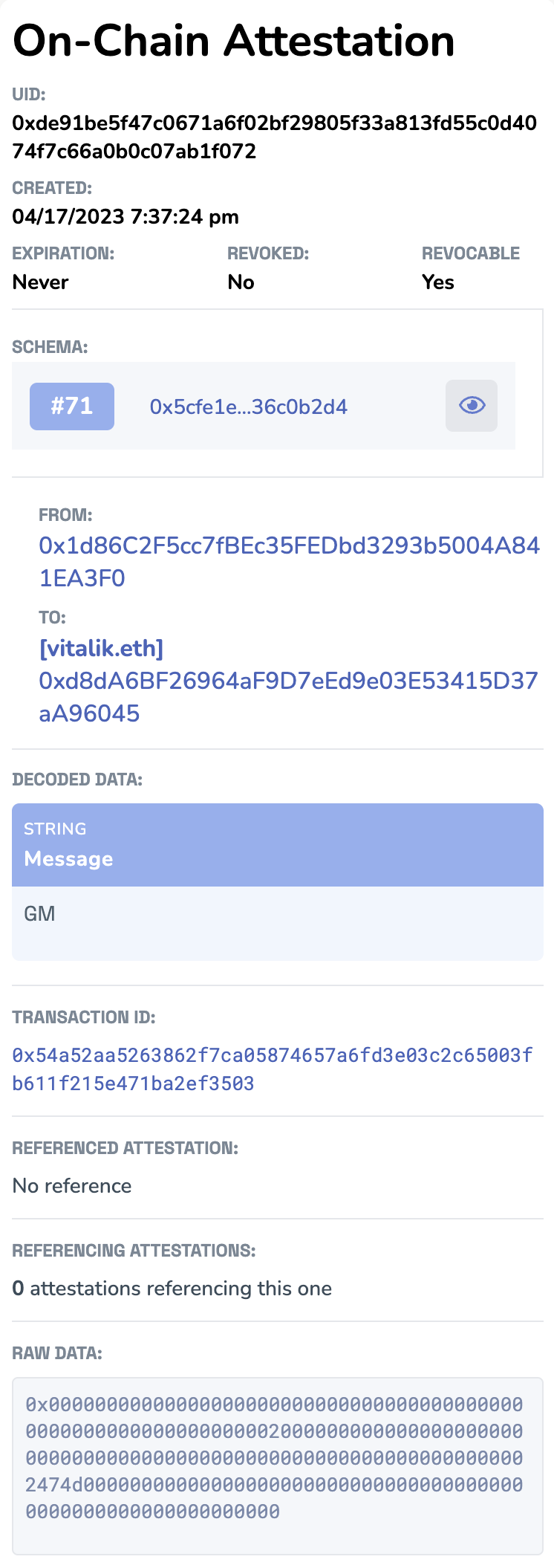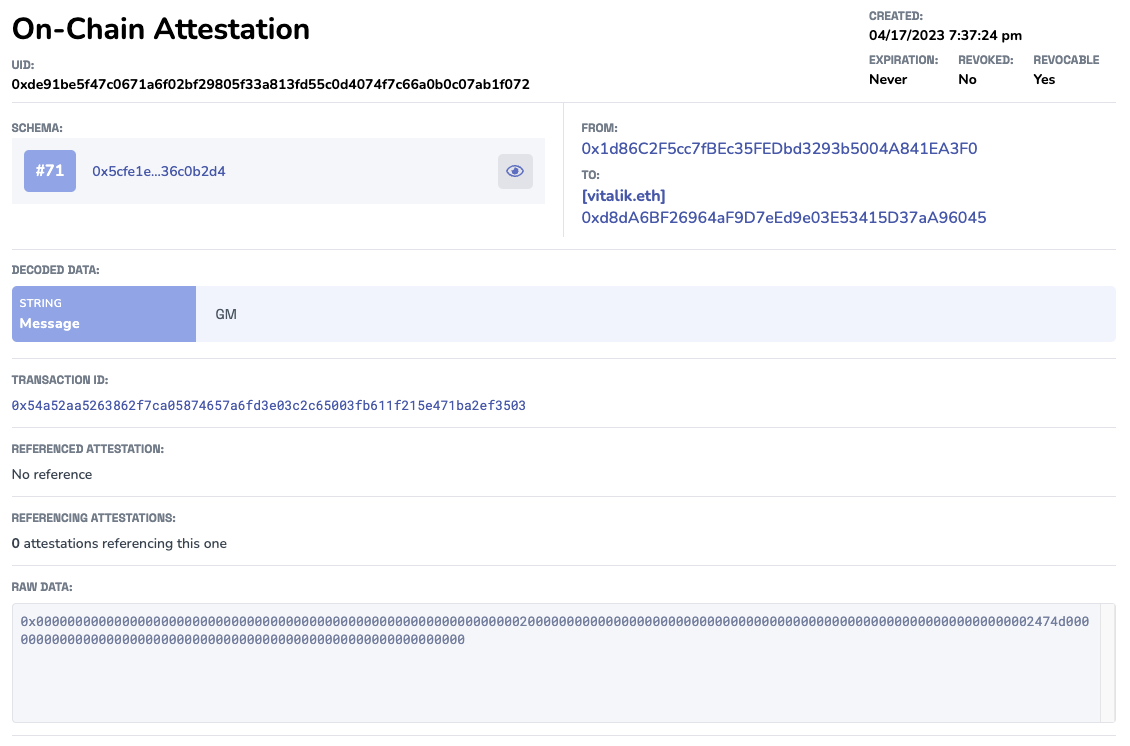Learn more about EAS in our docs
scroll
/
3 of 5
Let’s break down the anatomy of an attestation.
Learn about each section then click next.

1
2
3
4
5
6
Every attestation is unique
Each attestation has its own unique identifier (UID) which is a hash of the entire attestation
Know the current status of the attestation
Verify the current status of the attestation to see when it was created, if it has expired, or if the attester has revoked it. This can help you determine if the attestation is still valid and trustworthy, ensuring you have the most up-to-date information.
Every attestation follows a schema
Schemas are the data of the attestation. They are completely customizable and can be created for any purpose, allowing users to leverage preexisting schemas or create new ones tailored to their specific needs.
Know who is involved
Find out which address made the attestation and if there is a recipient involved. Knowing who is involved in the attestation is important to understand the context and trustworthiness of the information being attested to.
Get a clear view of the attestation data
The attestation data will be decoded in this section based on the schema used so that it is easily legible for any verifiers or users inspecting the attestation content.
Build composable attestations
One of the most powerful features of EAS is its ability to allow attestations to reference other attestation UIDs. This makes it possible to organize attestations in a more structured manner and understand their relationships easily.

1
2
3
4
5
6
Every attestation is unique
Each attestation has its own unique identifier (UID) which is a hash of the entire attestation
Know the current status of the attestation
Verify the current status of the attestation to see when it was created, if it has expired, or if the attester has revoked it. This can help you determine if the attestation is still valid and trustworthy, ensuring you have the most up-to-date information.
Every attestation follows a schema
Schemas are the data of the attestation. They are completely customizable and can be created for any purpose, allowing users to leverage preexisting schemas or create new ones tailored to their specific needs.
Know who is involved
Find out which address made the attestation and if there is a recipient involved. Knowing who is involved in the attestation is important to understand the context and trustworthiness of the information being attested to.
Get a clear view of the attestation data
The attestation data will be decoded in this section based on the schema used so that it is easily legible for any verifiers or users inspecting the attestation content.
Build composable attestations
One of the most powerful features of EAS is its ability to allow attestations to reference other attestation UIDs. This makes it possible to organize attestations in a more structured manner and understand their relationships easily.
